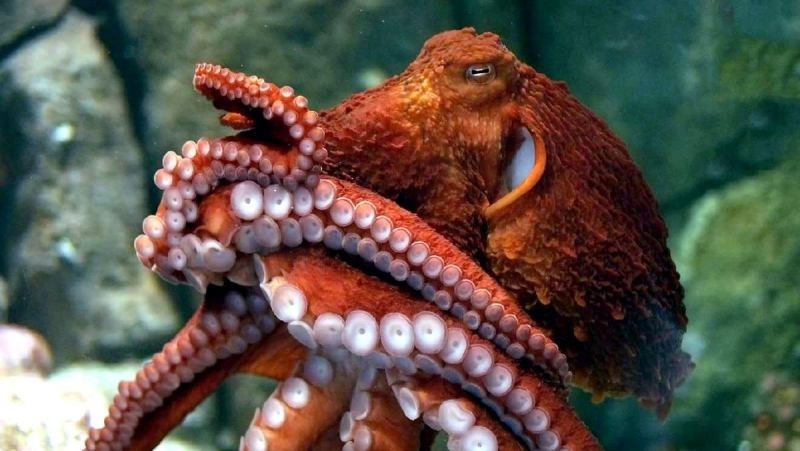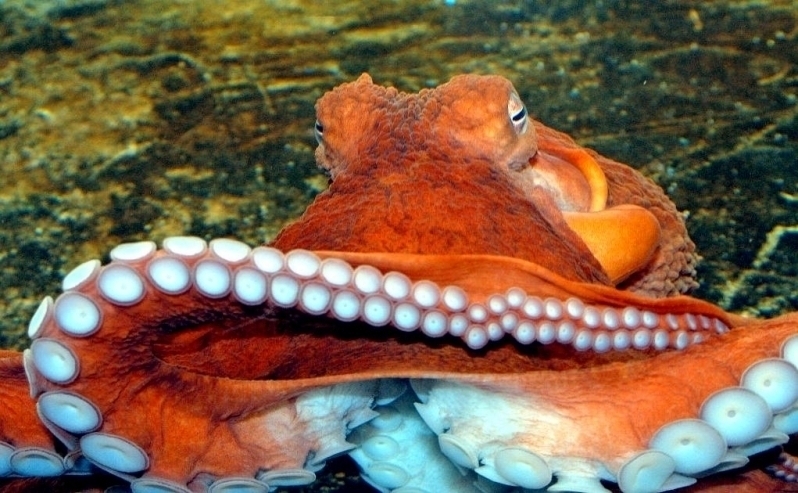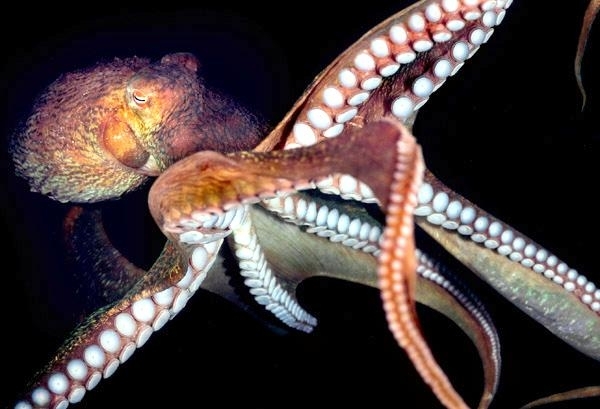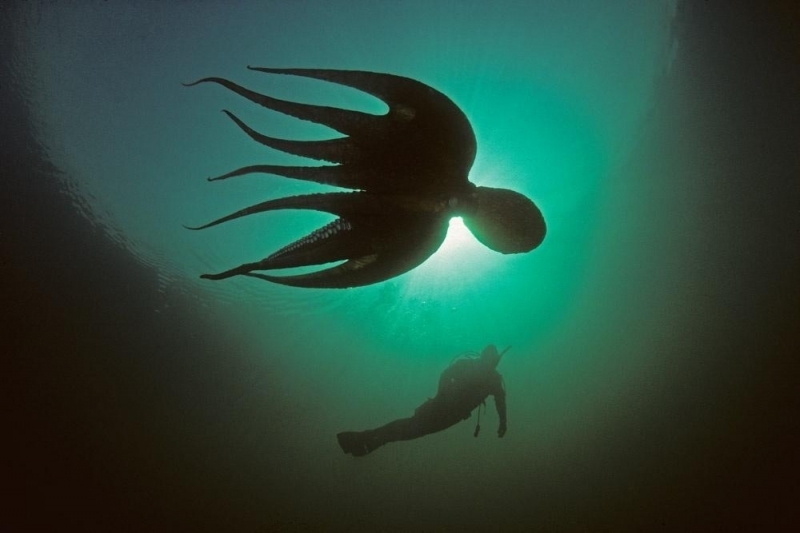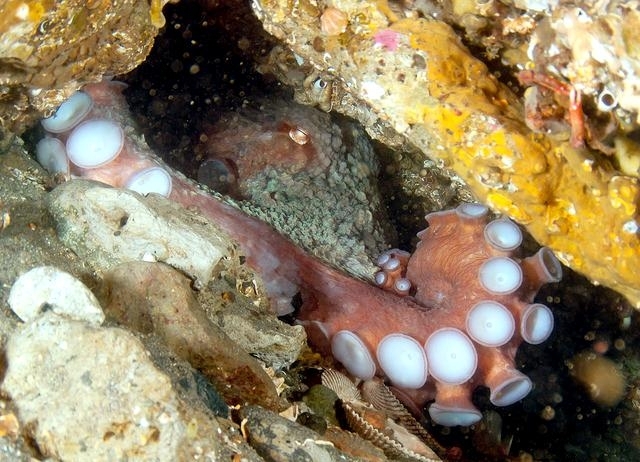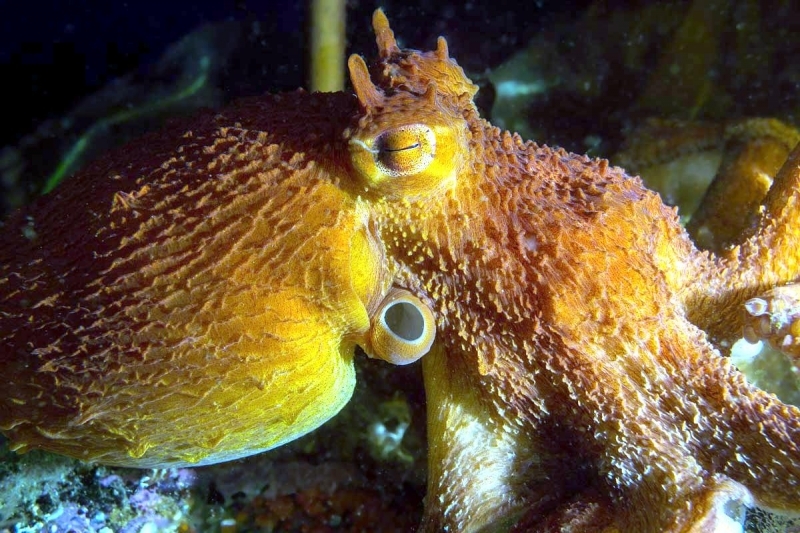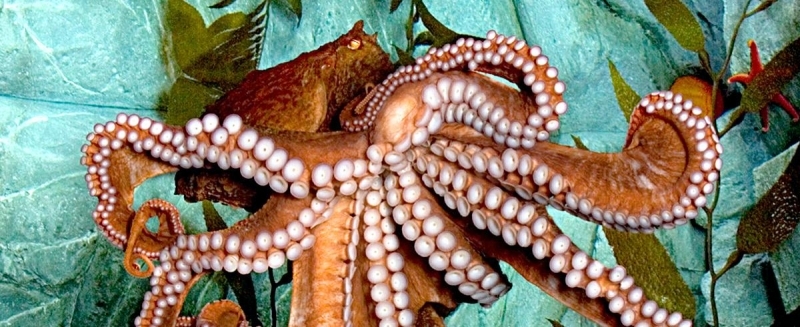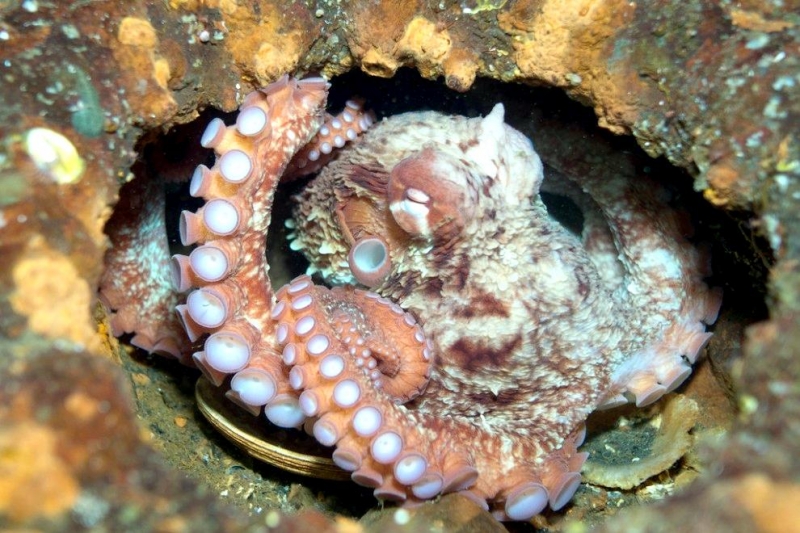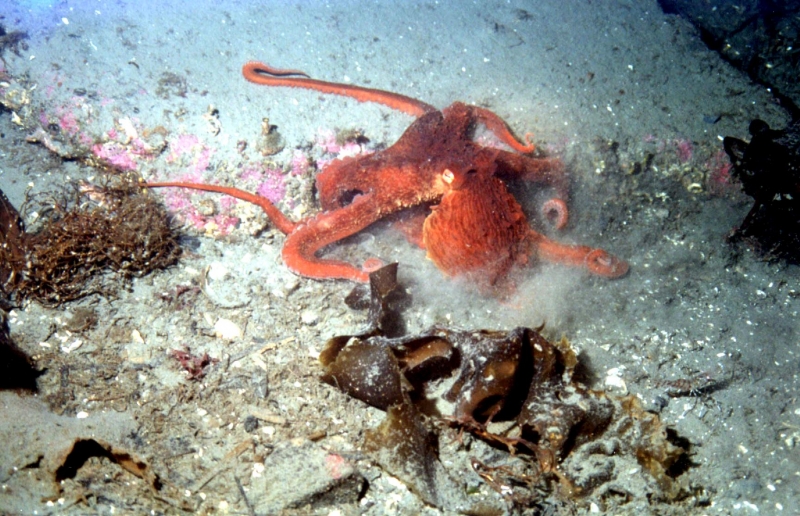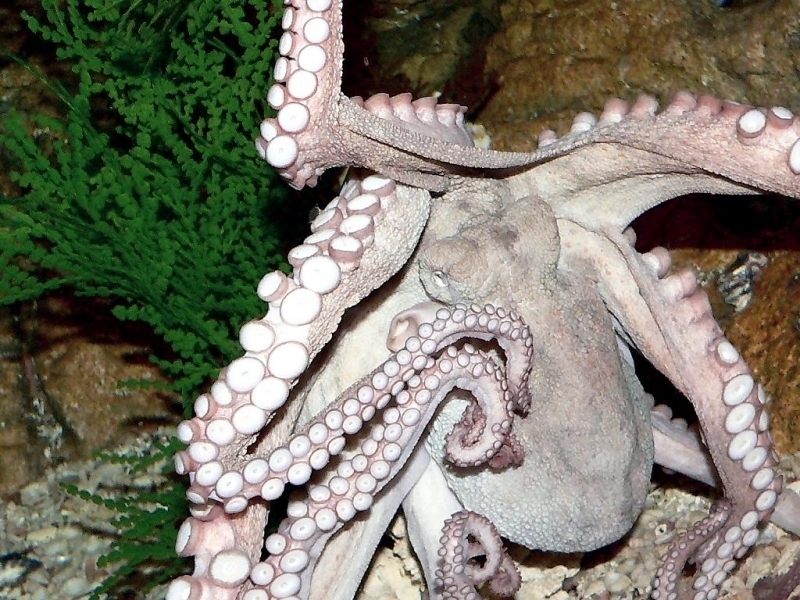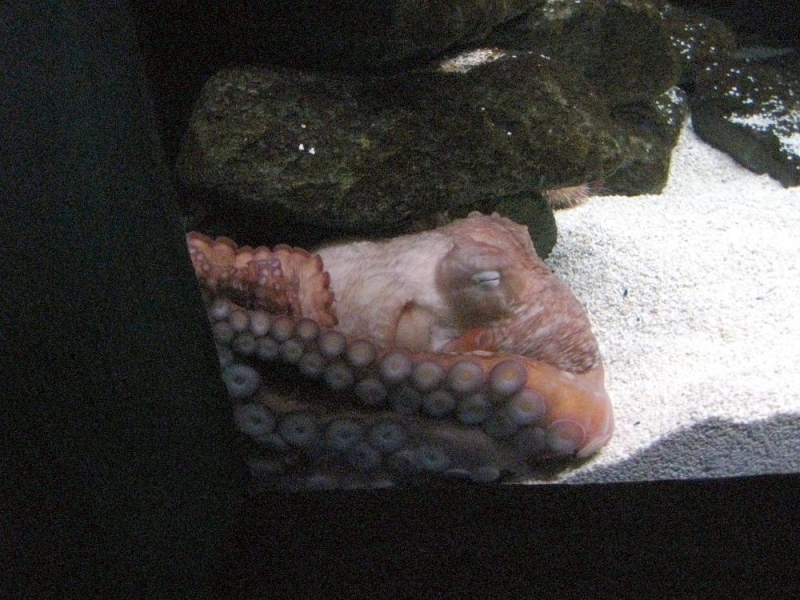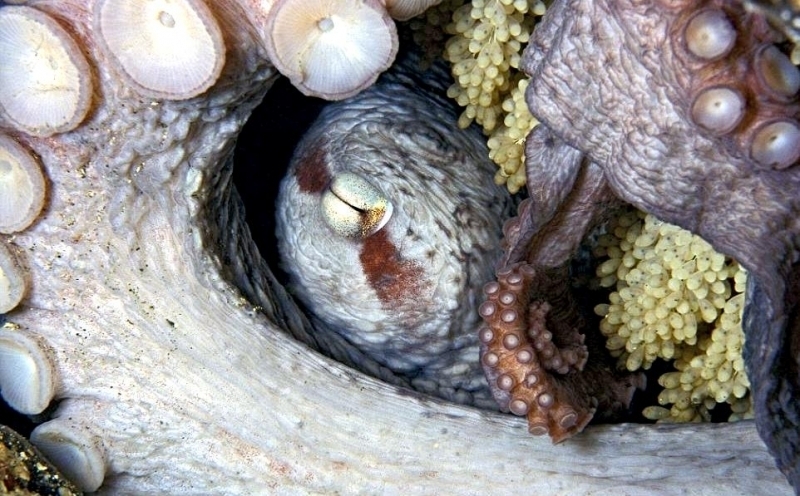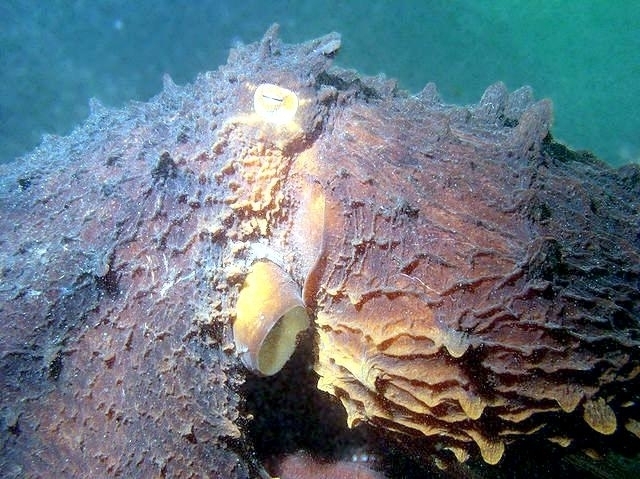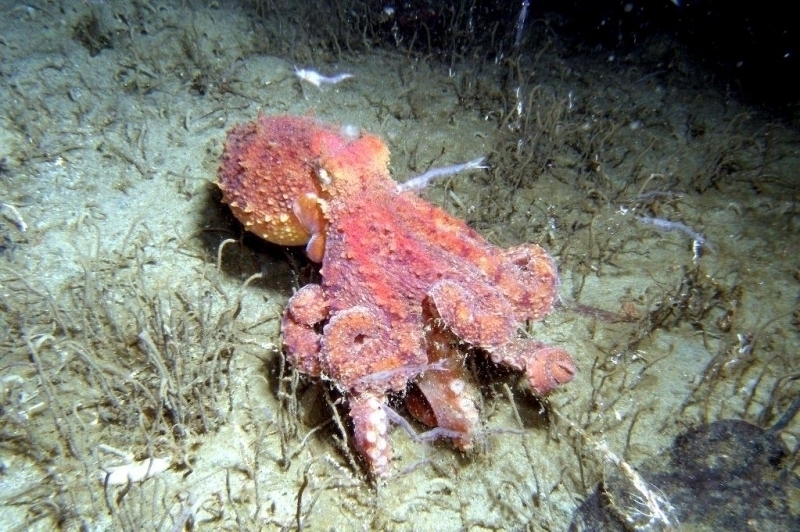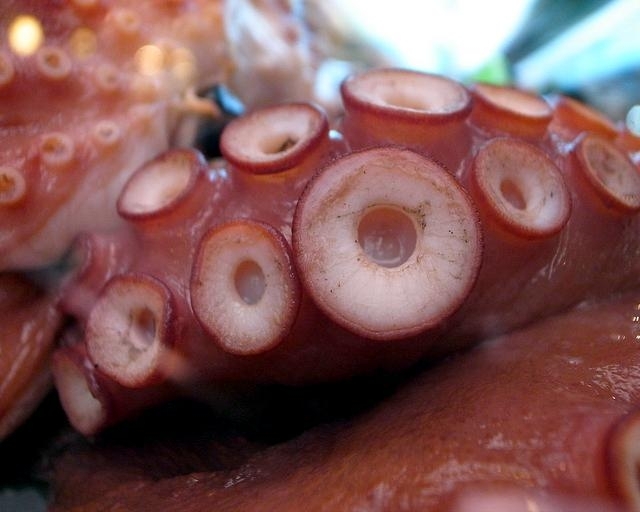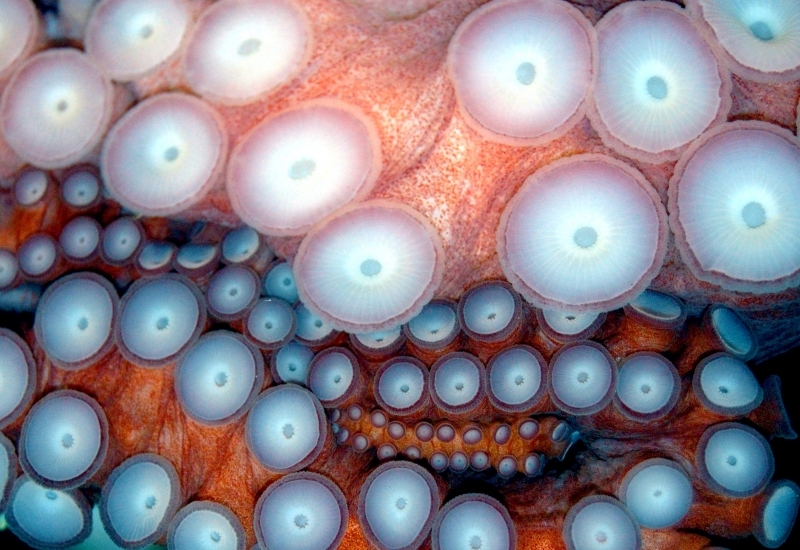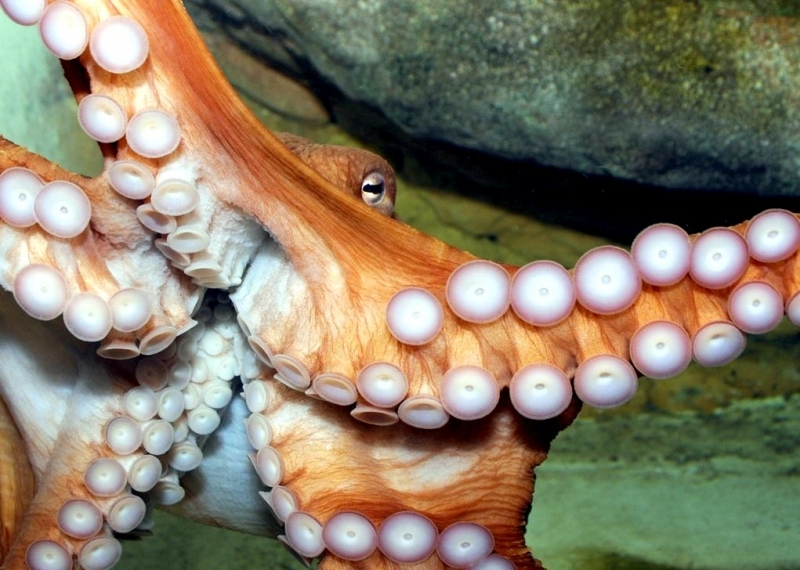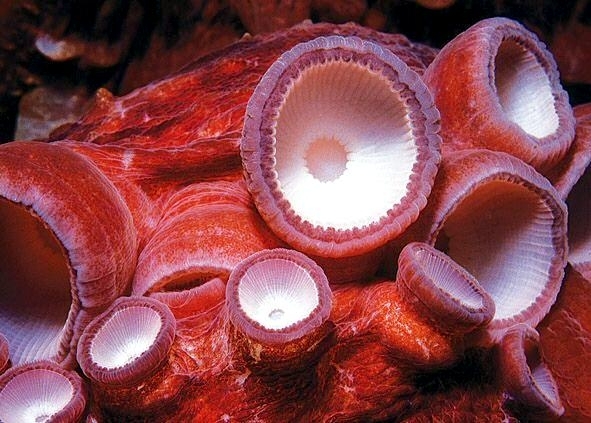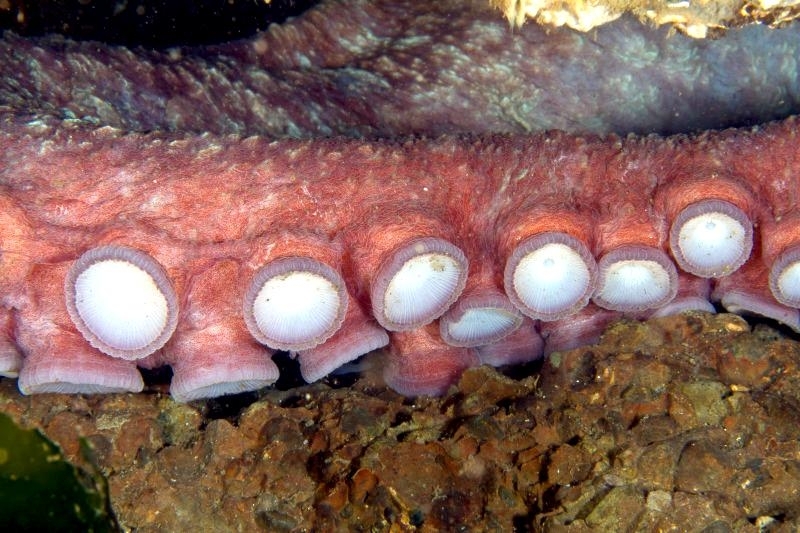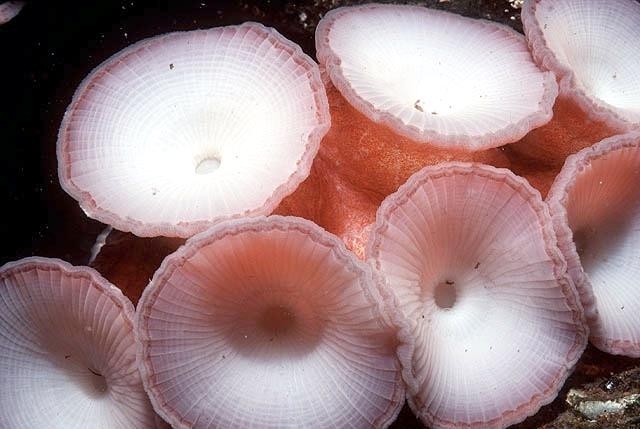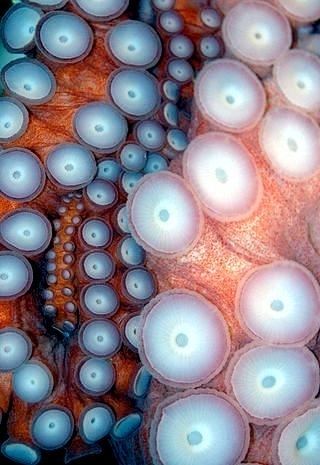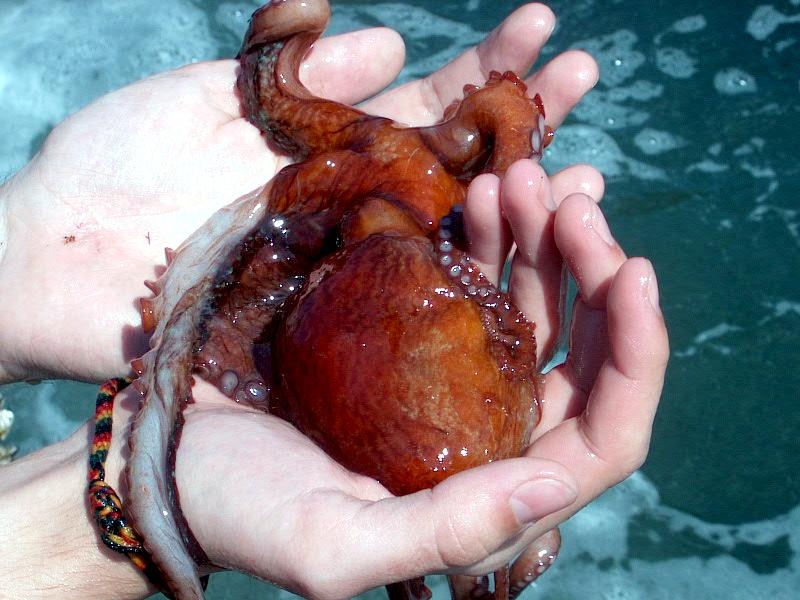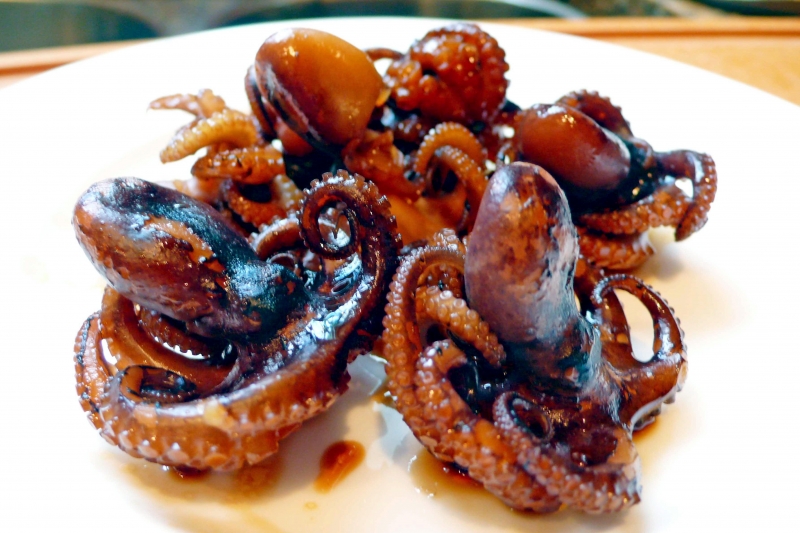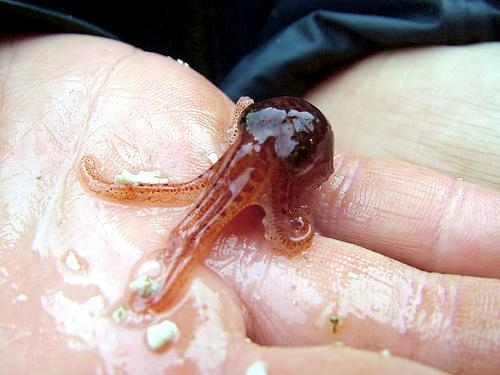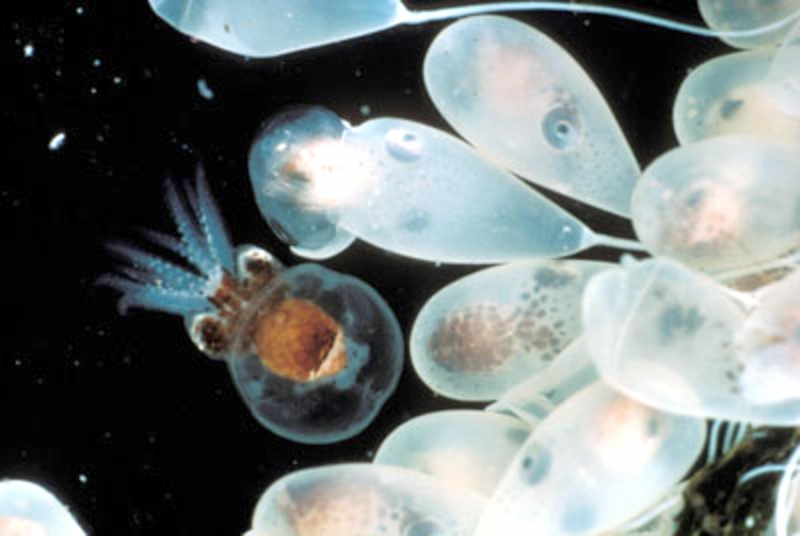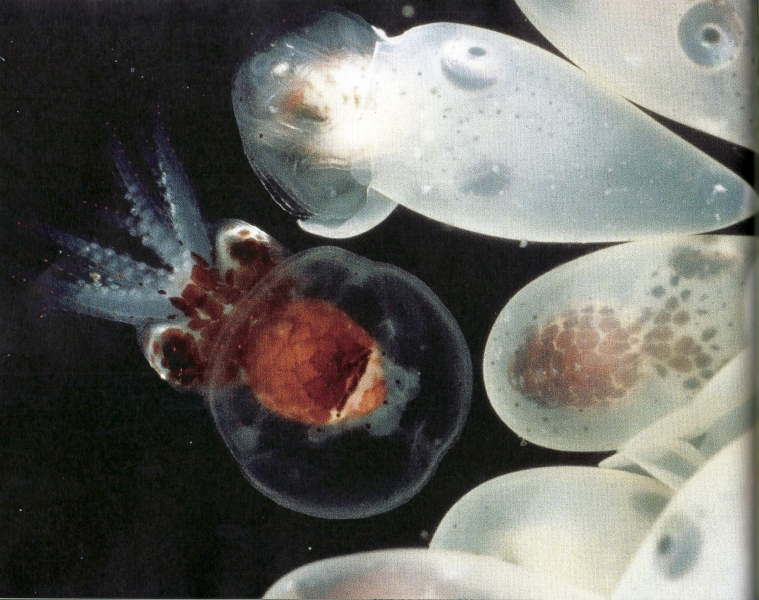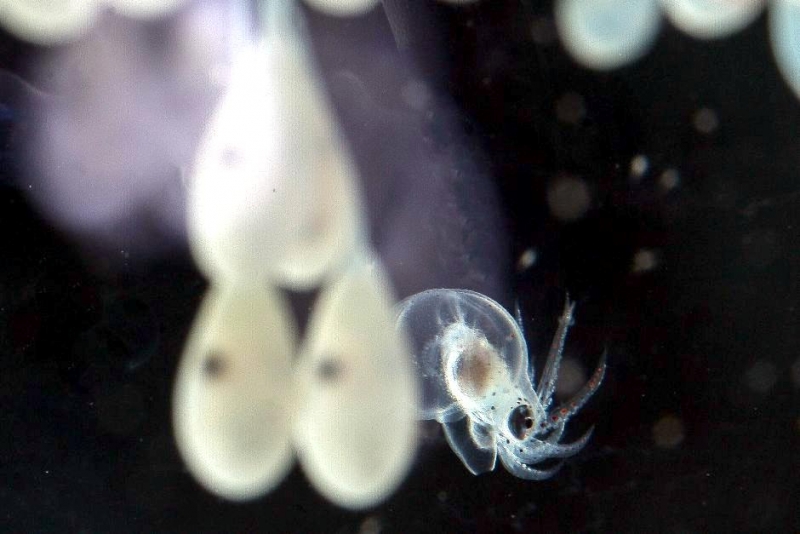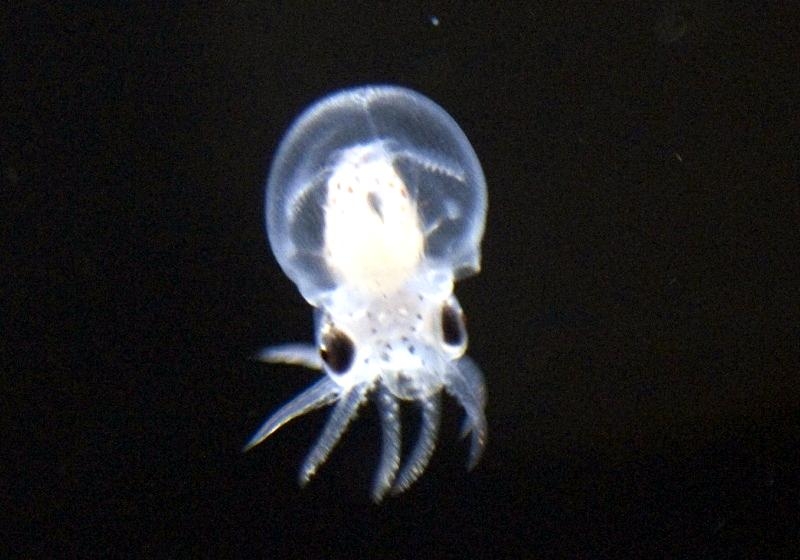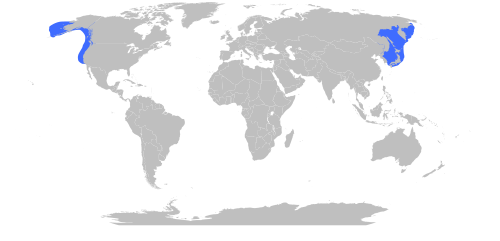“Enteroctopus dofleini”
The Giant Pacific Octopus which may grow to over 9 meters in length and weigh more than 45 kilograms. The Giant Pacific Octopus has a reddish-brown body called the mantle plus 4 pairs of arms, measuring on average about 4.9 meters long. The name Octopus came from the Greek okto (eight) and pous (foot). The record weight for a Giant Pacific Octopus is 274 kilograms but most weigh about 23-41 kilograms. Newly hatched young are the size of a grain of rice. They have the most complex brain of the invertebrates (animals without backbones). Like most invertebrates, they also have long-term & short-term memories. The Giant Pacific Octopus learns to solve problems by trial-and-error and experience. Once the problem is solved, they remember and are able to solve it and similar problems repeatedly. Their sense of touch is acute in its suckers. The rim of the cups are particularly sensitive. A blindfolded Giant Pacific Octopus can differentiate between objects of various shapes & sizes as well as a sighted octopus. Giant Pacific Octopuses have highly complex eyes which compare to human visual acuity. Focusing is done by moving the lens in & out rather than by changing its shape as the human eye does. Giant Pacific Octopuses consume mostly crustaceans and mollusks, most often crabs & scallops. Other bivalves, snails, fish, sharks and even other octopuses are also eaten. Giant Pacific Octopuses use 3 different techniques to gain entry to hard-shelled prey: they may pull it apart, bite it open with their beak or ‘drill’ through the shell. Prey that are difficult to pull or bite open are drilled: secretions from the salivary papilla soften the shell of the prey and the softened material is then scraped away with the radula to create a tiny hole in the shell. Through this hole, the Giant Pacific Octopus secretes a toxin that paralyzes the prey and begins to dissolve the connective tissue which is then pulled apart & consumed.
When threatened, the Giant Pacific Octopus like all octopuses will often try to escape by releasing a cloud of purple-black ink to confuse the enemy. Its body will change color, release an ink-cloud and jet away to safety. Several blotches of ink can be released before the ink sac is empty. The ink is toxic to an octopus in a confined space such as in a cave with little current flow or in captivity. If the Giant Pacific Octopus cannot escape the ink or water is not changed quickly when held in an aquarium, it will become ill or perhaps die. Color change in octopuses is initiated by the eyes. If disturbed, special pigment cells (chromatophores) in the skin will be activated in an attempt to blend in with the surroundings. The chromatophores consist of 3 bags containing different colors which are adjusted individually until the back ground is matched. Coloration reflects mood, white for fear, red for anger, brown is the usual color. The Giant Pacific Octopus lives off the coast of southern California, north along the coastline of the Pacific Northwestern Americas, across the Aleutians and south to Japan. The species occurs at depths from the inter-tidal to 750 meters.
The Giant Pacific Octopus lives 3-5 years. When sexually mature, females lay eggs on the inner side of a rocky den and may lay 20,000 to 100,000 eggs over a period of several days. Eggs are tended, cleaned and aerated by females until they hatch. Incubation takes 150 days to 7 or more months, depending on the temperature. Females do not feed while tending eggs and die when the eggs hatch or shortly thereafter. Many of the eggs will die if not tended by the female until hatching. The third right arm of the male is modified with a modified tip called the ligula, that is used during mating and in the Giant Pacific Octopus, the arm may be 1/5 the length of the arm. Males may mate with more than 1 female and females receive fairly large spermatophores (up to 1 meter long) during mating. Eggs are laid quite awhile after mating. Following their hatchings, the Giant Pacific Octopus young swim toward the surface and spend 4-12 weeks drifting in the plankton until they reach a size of 14 millimeters mantle length (still under 5 grams). The young then settle to the bottom, although not much is known about this settlement phase. Dens are an important resource to a Giant Pacific Octopus during all benthic life stages and are used both as brooding chambers and as refuges from predators including other octopuses, various fishes and many marine mammals. Most dens of juvenile Giant Pacific Octopus are naturally occurring spaces under rocks, in crevices or an excavated cavity in sand or gravel under a boulder.



